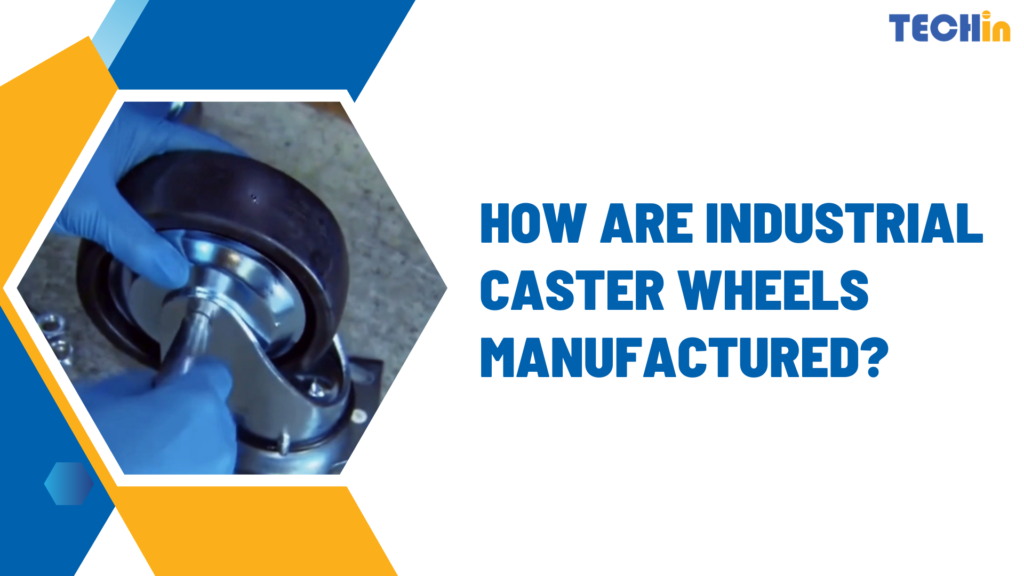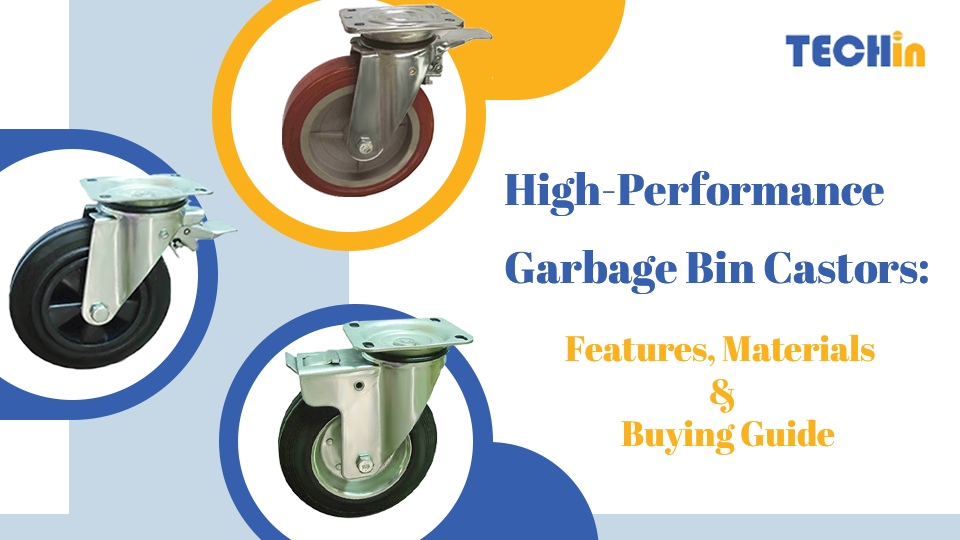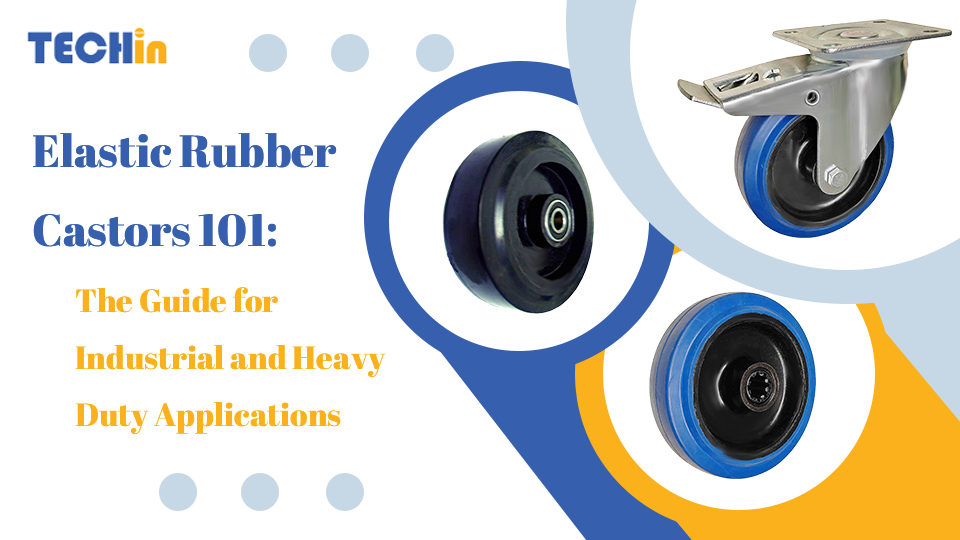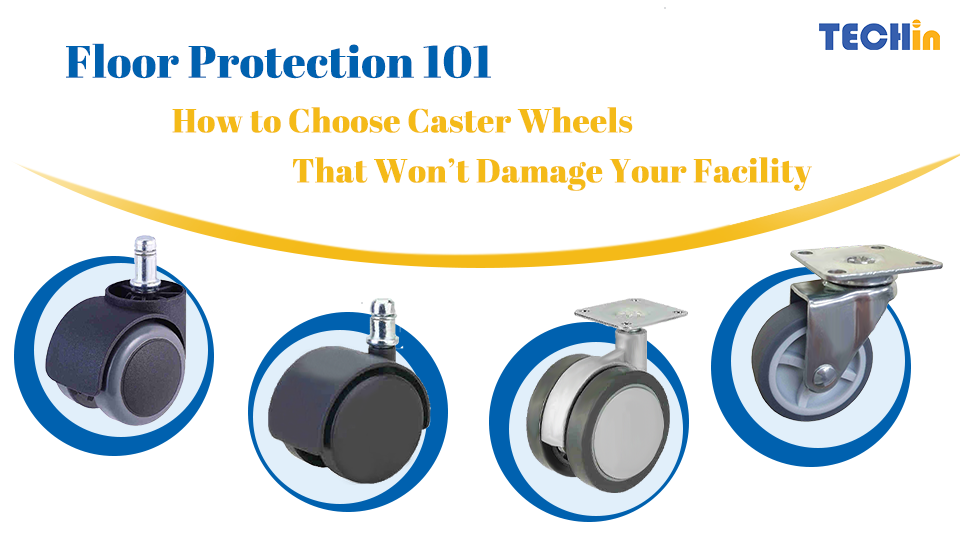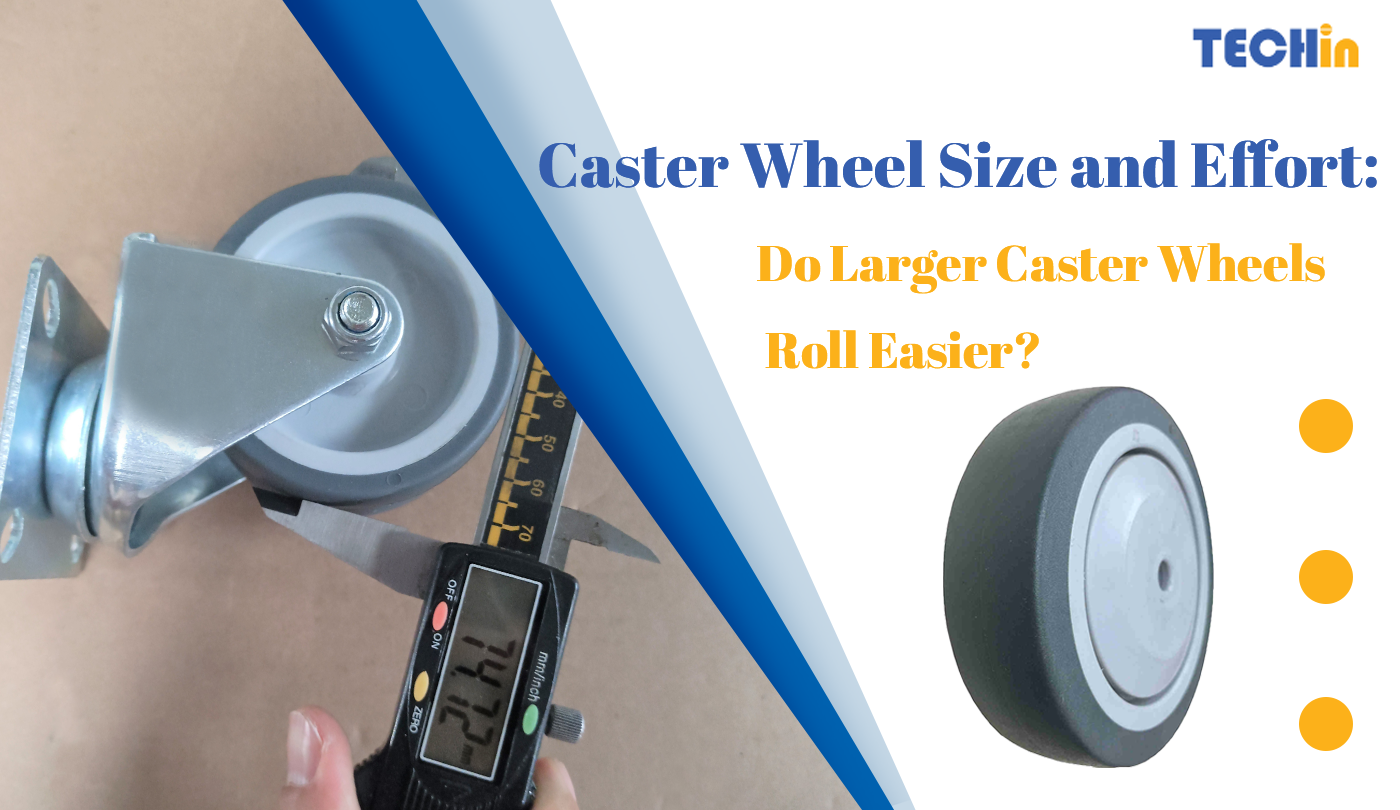Introduction
In industrial settings, you need caster wheels that are tough and can handle a lot of weight. They need to be able to roll smoothly over all kinds of surfaces and hold up under tough conditions. But how exactly are industrial caster wheels manufactured?
Knowing how they’re made helps you make better decisions when you’re buying them, but it also gives you an appreciation for the engineering, precision, and strict quality control that goes into making wheels that can handle the toughest environments.
Industrial caster wheels go through a detailed process that includes research and development, material selection, wheel production, housing construction, surface treatment, assembly, and strict quality control testing. Each step is designed to make sure the wheels can handle the demands of industrial use, including heavy loads, tough conditions, and constant use.
Let’s go through each step of the process.
1. What is the role of R&D in industrial caster wheel manufacturing?
The manufacturing of industrial caster wheels begins with an in-depth research and development (R&D) phase. This step is crucial because industrial caster wheels are expected to meet strict standards for load-bearing, mobility, chemical resistance, and operational longevity. R&D teams consider factors like the environment in which the wheels will be used, the type of surfaces they will move across, and the amount of weight they will need to carry.
- Design Conceptualization: Engineers conceptualize wheel designs based on the specific industrial application, load capacity, and operating environment. For example, wheels for cleanrooms will differ from those used in warehouses or outdoor environments.
- CAD Modeling and Drawing: The initial designs are translated into 3D models using computer-aided design (CAD) software. This allows engineers to fine-tune the dimensions, stress points, and overall design. These technical drawings and models act as blueprints for the rest of the manufacturing process.
- Prototyping: Prototypes are created to test the designs. The prototypes undergo rigorous testing for functionality, durability, and resistance to environmental stressors. Adjustments are made during this stage to ensure the wheels will perform as required before they move into mass production.
2. What materials are used to manufacture industrial caster wheels?
The choice of materials is a critical aspect of manufacturing industrial caster wheels. Each material brings different characteristics to the final product, such as load capacity, resistance to wear and tear, or performance in harsh environments. Common materials used include:
- Polyurethane (PU): Often used for heavy-duty industrial caster wheels, PU offers excellent load capacity, resistance to abrasion, and shock absorption. It also protects floors, making it ideal for environments where surface protection is important.
- Rubber: Rubber wheels are softer, offering good traction and shock absorption. They are frequently used for applications requiring quiet operation and floor protection, such as hospitals or manufacturing facilities with sensitive equipment.
- Nylon: Known for its durability and resistance to chemicals, nylon wheels are ideal for environments with exposure to harsh chemicals, oils, and extreme temperatures. Nylon wheels are lightweight yet strong, making them a great choice for high-load applications.
- Cast Iron/Steel: These materials are chosen for their strength and ability to withstand high temperatures. Industrial caster wheels made from steel or cast iron are often used in environments with extreme temperatures, heavy loads, and abrasive materials like metal shavings or chemicals.
- Aluminum: Used primarily for the core of the wheel in combination with other materials like polyurethane, aluminum provides lightweight strength and corrosion resistance. This is crucial for applications requiring both strength and mobility.
Each material is selected based on the intended industrial application. For example, high-temperature-resistant wheels may be needed in foundries, while chemical-resistant wheels are required in pharmaceutical or food processing plants.
3. How is the caster housing for industrial caster wheels made?
The caster housing, which supports the wheel and ensures it can swivel and move smoothly, is an integral part of the caster wheel assembly. The housing needs to be strong enough to support heavy loads without deforming under pressure. The process of manufacturing the housing involves:
Metal Stamping: Sheets of steel or other metals are precision-cut using stamping machines. These machines apply force to the metal sheets to create the exact shape of the top plate, yoke, or other structural components of the housing.
Forming and Bending: After the metal is stamped, it is formed into the desired shape, often with the help of press brakes and forming tools. The housings are bent and shaped to meet specific design requirements, ensuring they can accommodate the wheel and provide sufficient clearance for swiveling.
Welding: For added strength, especially in heavy-duty applications, the parts of the housing are often welded together. Welds ensure the components form a strong and cohesive structure capable of handling heavy loads without failing.
The caster housing is designed to provide both strength and flexibility, ensuring the wheel can pivot smoothly even under extreme industrial conditions.
4. How are industrial caster wheels produced?
The production process of the wheels themselves can vary depending on the materials used. Here’s a breakdown of some common processes:
- Injection Molding for Rubber and Polyurethane Wheels:
In this process, high-density plastic or rubber pellets are heated until they reach a molten state. The molten material is then injected into precision molds that shape the wheels. Once cooled, the wheels are removed from the molds and trimmed to ensure they meet the required dimensions. - For rubber wheels, the hub is inserted into a mold, and melted chloroprene rubber is injected to form the outer layer. This creates a wheel that combines the shock absorption of rubber with the strength of the internal hub.
- For polyurethane wheels, an aluminum or steel core is often die-cast first. Then, polyurethane is injected around the core to combine the strength of the metal with the flexibility of the polyurethane.
- Casting for Metal Wheels:
In casting, molten metal (such as cast iron or aluminum) is poured into molds shaped like the wheel. After cooling and solidifying, the wheel is removed from the mold and polished to remove imperfections. This process is commonly used for high-capacity caster wheels that need to endure extreme temperatures or high load-bearing applications.
Precision is key in both of these processes to ensure the wheels are manufactured to exact specifications. Wheels that are inconsistent in size or shape could cause equipment to malfunction or break down during use.
5. What surface treatments are applied to industrial caster wheels?
Surface treatment is an important part of the manufacturing process, ensuring the caster wheels are protected from rust, corrosion, and wear over time. The treatments typically include:
- Cleaning: Before any coating is applied, the caster housing and wheel components are thoroughly cleaned to remove any dust, oils, or contaminants that might interfere with the adhesion of paint or coating.
- Coating and Spray Painting:
After cleaning, a layer of high-quality paint or a protective coating is applied to the caster housing. This can include powder coatings, zinc plating, or other forms of corrosion-resistant coatings. These coatings help protect the wheels from oxidation, rust, and general wear and tear, ensuring they last longer in industrial environments. - Curing: The coated components are placed in a curing oven where the paint or coating is baked onto the surface. This process hardens the coating, ensuring it remains durable and resistant to environmental factors.
The surface treatment not only enhances the durability of the caster wheels but also improves their appearance, making them suitable for industrial environments that require both function and aesthetics.
6. What does the industrial caster wheel assembly process involve?
The assembly process for industrial caster wheels can vary based on the type of caster being produced. Generally, the assembly involves several key steps:
- Inserting Bearings: For swivel casters, ball bearings are installed between the caster housing and the wheel. These bearings allow the wheel to rotate 360 degrees smoothly. The bearings are typically inserted using precision tools to ensure a tight fit, preventing wobble or misalignment during use.
- Fastening Components: During manual or automated assembly, steel fasteners are used to secure the bearings in place and connect the various components of the caster housing and wheel. This ensures that the wheel remains firmly attached to the housing and can move freely.
- Final Assembly: The assembled components are put together in either a manual assembly line (for smaller batches) or an automated assembly system (for large-scale production). In both cases, the assembled caster wheels undergo inspection to ensure everything is correctly aligned and functioning.
6. How are industrial caster wheels tested for quality?
Quality control testing is an essential part of the manufacturing process to ensure that the caster wheels meet the necessary performance standards. Some of the tests include:
- Load Testing: Industrial caster wheels are subjected to heavy weights to ensure they can handle the advertised load without bending or deforming.
- Impact Testing: To simulate the harsh conditions of industrial use, heavy objects are dropped on the wheels to test their resistance to shocks and impacts.
- Salt Spray Testing: This test subjects the wheels to a corrosive environment (salt spray) to assess their resistance to rust and corrosion.
- Hardness Testing: This test verifies that the material’s hardness meets the required specifications, ensuring the wheels are resistant to wear and abrasion over time.
These tests ensure that the wheels meet safety and performance standards before they are packaged and shipped.
7. How is quality control maintained in the packaging and distribution of industrial caster wheels?
Before being shipped to customers, the finished caster wheels undergo a final cleaning and inspection. Any residue from the manufacturing process is removed to ensure the wheels are clean and ready for use. The wheels are then packaged securely to prevent any damage during shipping.
For large industrial orders, manufacturers may also provide certifications and documentation verifying that the wheels meet specific industry standards, such as weight capacity and material durability.
Conclusion
Making industrial caster wheels is a detailed process that involves a lot of precision, from picking the right materials to testing them. Each step is designed to make sure the wheels can handle the heavy loads and tough conditions you find in industrial settings. By understanding how they’re made, you can make better decisions when you’re buying them and get wheels that will be tough, perform well, and last a long time for your specific needs.
If you have any questions or specific needs regarding industrial caster wheels, feel free to reach out to us!
Email: info@techincastor.com
Tel/WhatsApp: +86 13417057114

